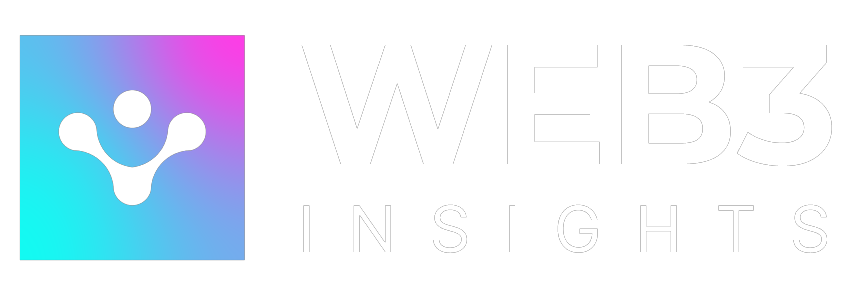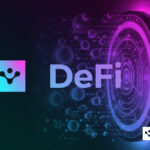
The internet has evolved rapidly, offering exciting new ways to connect, share, and explore at every stage.. Now, buckle up for the next big twist, Web3! This evolution aims to reshape web usage, empowering you, the user, with greater control.
Web3, often called the “decentralized web,” is built on the magic of blockchain technology. It aims to fix Web 2.0 flaws, like privacy issues and data monopolies, by creating a secure, user-controlled internet.
This article breaks down Web3, explores its key concepts, and examines the shift from Web 2.0.
Plus, we’ll shine a spotlight on Felbeth, a game-changing platform leading the charge in Web3 education and adoption across Africa.
Web3 Explained

Web 3.0, often called Web3, is the internet’s next big evolution; a smarter, more personalized, and decentralized version of the World Wide Web. While it’s still under development, Web 3.0 aims to revolutionize how we use the internet by giving you more control over your data and online interactions.
Imagine a web where you securely store and manage your information, without relying on big tech companies for control. Web 3.0 envisions a world where you can share, trade, and interact online without needing middlemen. It’s all about putting the power back into your hands, using cutting-edge technology like blockchain and cryptocurrencies to make it happen.
In this new version of the web, decentralized applications, or dApps, will play a major role. These apps run on a computer network, making them more secure, transparent, and resistant to censorship. You can think of dApps as the building blocks of Web 3.0, enabling a range of new possibilities, from peer-to-peer transactions to community-governed platforms.
What makes Web 3.0 even more exciting is its intelligence. By incorporating machine learning and artificial intelligence (AI), the web will become better at understanding your needs, predicting what you’re looking for, and offering more relevant content and services. This means a more personalized, intuitive experience every time you go online.
Web 3.0 puts you in control of your data, respects your privacy, and offers a more secure, personalized online experience. It marks the next step in the digital world’s evolution and is poised to transform how we connect, share, and create online.
Evolution of the Web

Web1: The Static Web (1989-2005)
Think of Web1 as the internet’s baby steps. During this era, web pages were like digital posters – you could read them, but that was about it. Built with simple HTML, these static pages were all about sharing information without any interactivity.
Early web browsers like Netscape Navigator and Internet Explorer help you navigate these text-heavy pages, which were often organized into directories to make browsing easier. The focus was on delivering information, not on engaging with users.
Web2: The Social Web (Mid-2000s onwards)
Then came Web2, and the internet grew up! This phase transformed the web into a lively, interactive space. Platforms like Facebook, Twitter (now X), and Wikipedia emerged, turning the internet into a giant playground where everyone could create and share content.
User-generated content (UGC) became king, and suddenly, you could comment, like, share, and collaborate online. This shift brought people closer together, fostering online communities and social interactions. However, this new era also meant that companies started monetizing user data, selling it to advertisers and keeping tight control over their platforms.
Web3: The Decentralized Web (The Future)
Web3, on the other hand, is all about decentralization, giving users control over their data and digital interactions using blockchain technology.
Blockchain Technology

Blockchain technology is like a super-smart digital ledger that keeps everything transparent and secure. Imagine a chain made of blocks, each block storing bits of data. These blocks link together, and once they connect, you can’t mess with them without everyone in the network agreeing. This makes blockchain perfect for tracking things like orders, payments, and accounts because it’s tamper-proof.
Why is blockchain such a game-changer? It slashes security risks, wipes out fraud, and makes everything crystal clear. While it started with cryptocurrency and NFTs, blockchain has grown up. Now, it ensures food safety, protects healthcare data, revolutionizes gaming, and expertly handles data and ownership.
Web3 takes this awesome blockchain tech and uses it to give you control over your data and digital life. It’s all about a more secure, private, and user-friendly internet where you’re in charge.
Features and Principles of Web 3

1. Cryptocurrency:
Web3 crypto is all about using blockchain technology and cryptocurrency to take the internet to the next level. Blockchain makes it possible to create decentralized platforms that allow for secure and transparent transactions and a new way to manage data and assets online.
One big benefit of blockchain in Web3 is that it removes the need for middlemen like banks in transactions, making them faster, cheaper, and more secure. Plus, blockchain enables smart contracts and self-executing agreements with the terms written directly into the code.
2. Artificial Intelligence:
Artificial Intelligence (AI) plays a big role in Web 3.0, the next generation of the internet. AI helps computers handle and understand large amounts of data quickly. It helps understand language, recognize images, and make decisions.
In Web 3.0, AI will make online experiences more personal and user-friendly. For instance, it can provide better search results, personalized recommendations, and easier ways to talk to online services. AI in Web 3.0 can also predict what users might do next, improve how websites work, and make using the internet more enjoyable overall.
3. Personalized Data Control:
When discussing the features of Web 3.0, it’s essential to highlight its focus on personal data control. Web 3.0 empowers users to share only the data they are comfortable with, granting them complete authority over their content and privacy. This shift addresses growing concerns about data breaches and privacy by ensuring users can share personal information without compromising security. A key technology enabling this control is zero-knowledge proofs, which allow users to prove they possess certain information without revealing the information itself, protecting their identity and location.
Web 3.0 also emphasizes privacy and security, using advanced methods to protect personal information.
4. Decentralization:
Decentralization is a major feature of Web 3.0, designed to make the Internet more secure and efficient. By using blockchain technology, Web 3.0 creates platforms that don’t rely on a central authority. Instead, many nodes share control, eliminating a single point of failure and making the system more secure and resilient. This approach also allows for secure, transparent transactions and a new way to manage data and assets online.
5. Redefined Data Ownership:
Redefined data ownership refers to users having greater control over their data and its usage. This is a key feature of Web 3.0, aiming to empower users with more control over their digital information. A crucial technology enabling this is decentralized storage, which allows data to be stored on a decentralized network. This enhances security, making it harder for hackers to access and steal personal information, and gives users more control over who can access their data and how it is used.
Felbeth: Promoting Web3 Education and Adoption in Africa

Felbeth is at the forefront of transforming education for the digital age, particularly in Africa, by focusing on Web3 technology. As a specialized Web3 EdTech platform, Felbeth is dedicated to shaping the future of work in the decentralized web by empowering young Africans with the essential skills needed for tomorrow’s digital landscape.
Bridging the Skill Gap in Web3
Web3 and blockchain technologies offer vast opportunities, but they often seem complex and inaccessible to many. Felbeth aims to bridge this skill gap by providing tailored courses that demystify these technologies. Their educational programs equip individuals with digital skills to secure jobs and build lasting careers in a rapidly evolving field.
Comprehensive and Innovative Learning Resources
Felbeth is on a mission to become the premier Web3 EdTech platform in Africa. Felbeth provides comprehensive Web3 and blockchain courses, catering to beginners and advanced learners in smart contracts and DeFi.
Course Offerings
- Introduction to Smart Contracts: Learn the basics of smart contracts and their role in automating transactions on the blockchain.
- Web3 Marketing: Explore strategies for promoting decentralized applications and services in the Web3 ecosystem.
- Web3 Gaming: Dive into the world of decentralized gaming, where players have true ownership of in-game assets.
- Decentralized Finance (DeFi): Understand the principles of DeFi, including decentralized exchanges, lending platforms, and the future of finance.
Felbeth is not just about education, it’s about empowerment. Felbeth equips young Africans with skills to thrive in the digital economy, shaping the future of Web3 work.
Unlock the potential of Web3 and build your career with Felbeth guiding you every step of the way. To learn more about our courses and apply, visit Felbeth today!
Real-World Use Cases of Web3

Web3 is transforming various industries by leveraging decentralization, blockchain, and smart contracts:
- In Decentralized Finance (DeFi), Web3 enables peer-to-peer financial services without intermediaries, making transactions more efficient and accessible.
- NFTs revolutionize digital ownership, enabling artists to tokenize and sell their work directly to global audiences.
- Decentralized Autonomous Organizations (DAOs) empower communities to govern projects collectively, with decisions made transparently on the blockchain.
- In Supply Chain Management, Web3 enhances transparency and traceability, ensuring product authenticity and ethical sourcing.
- Web3 is reshaping gaming through Metaverse platforms, enabling decentralized worlds where players own and trade assets.
These use cases highlight Web3’s potential to disrupt traditional models and create new opportunities across sectors.
Conclusion
Web3 shifts power from centralized entities to individuals, revolutionizing internet interactions through decentralization. By embracing principles like trustlessness, permissionless access, and enhanced privacy, Web3 offers a more secure, transparent, and user-controlled online experience.
As we shift to Web 3.0, platforms like Felbeth drive blockchain education and adoption, especially in Africa. Now is the time to explore and engage with Web3, shaping the future of the decentralized web!








